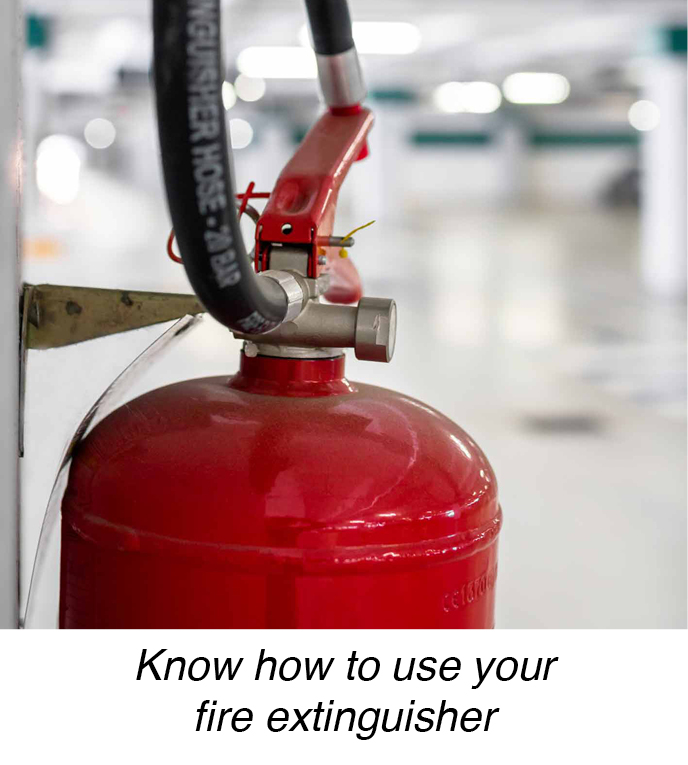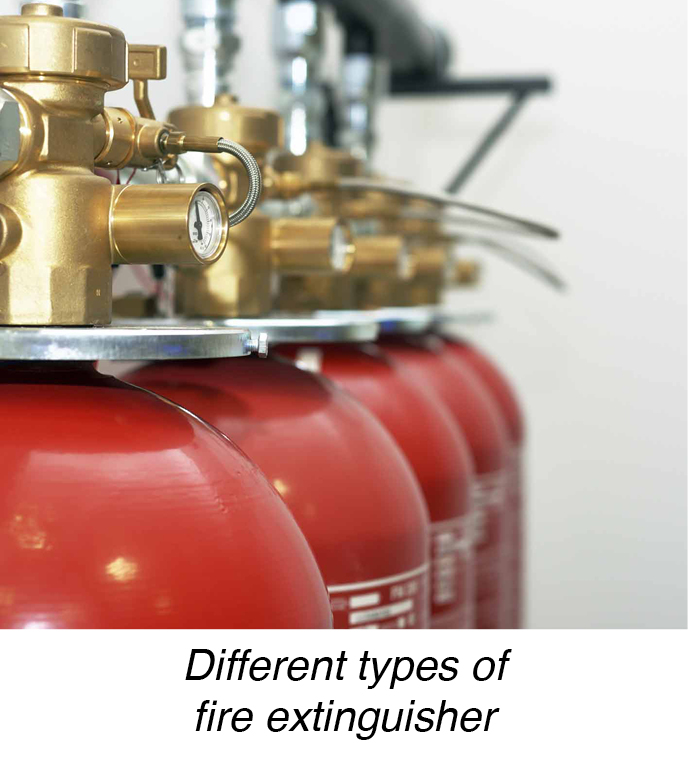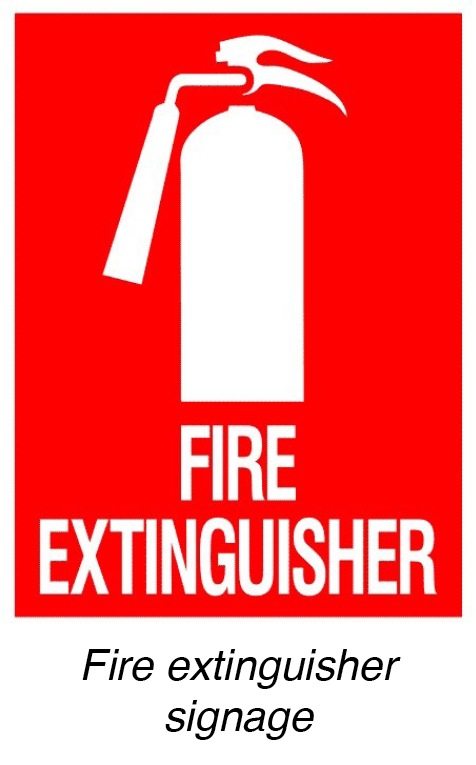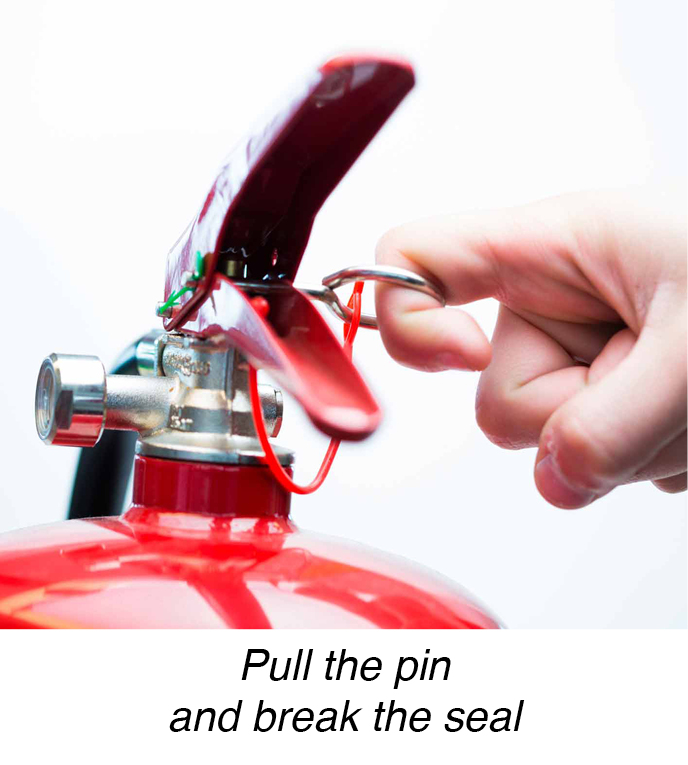How well do you know your kitchen’s fire extinguisher? Have you read the usage instructions? Have your employees? Do you know what classes of fire it can combat? And which it can’t?
If you’re like many people, you may have had your fire extinguishers installed years ago to satisfy your business’ legal requirements. And you may not have thought about them since.
Your Comprehensive Guide to Fire Extinguishers
In the event of fire, knowing your fire extinguisher and how to use it is crucial. So for this week’s blog, we’re going to take a look at the most common fire extinguishers in Australia, and how to use them.
1. What a fire extinguisher is and what it isn’t
A fire extinguisher is a simple pressurised device, which releases chemicals or water to fight small fires. In commercial kitchens, fire extinguishers are required by law.
They are one of your best tools for controlling and extinguishing kitchen fires. They can also be used to clear a safe path for employees or customers to exit your premises in larger fire situations.
They are not however, a substitute for professional fire-fighting equipment and personal. Should you be faced with a severe fire threat, use your fire extinguisher (if possible) to manage the fire, whilst a second person calls the fire department via 000.
2. How fire extinguishers are made and how they work
A fire needs three things to sustain itself: heat, fuel and oxygen. Fire extinguishers work by removing one or more of those elements.
For example, some fire extinguishers expel water which removes the heat. Others work by shooting out a blanket of foam which smoothers the fire and removes its air-supply.
Inside of any fire extinguisher is two substances. One the fire-fighting liquid, foam, or gas. Two the ‘propellant’. The propellant is a highly pressurised chemical, which forces the fire-fighting substance out at great speed and strength.
The body of the fire extinguisher is a tough steel canister, which is necessary to house the pressurised materials. A pin, handle and hose are also affixed to the top of the canister for ease of use.
3. Australian classes of fire and why knowing them is important
In Australia, we have six classes of fire. A fire’s class denotes its type and its fuel.
Your fire extinguisher, depending on its construction, will be rated against one or multiple fire classes.
|
Class
|
Examples of fire
|
|
A
|
Ordinary combustibles – paper, wood and cardboard
|
|
B
|
Flammable and combustible liquids – paints, petrol and methylated spirits
|
|
C
|
Flammable gases – BBQ gas, LPG, natural gas
|
|
D
|
Combustible materials
|
|
E
|
Electrically energised equipment – fuse boxes and computer equipment
|
|
F
|
Cooking oils and fats – drippings and fryer-oil
|
To find out which classes of fire your fire extinguisher is rated against see its labelling.
4. Types of fire extinguishers
Generally speaking, there are six types of fire extinguishers available in Australia today. Each are suitable for use on a variety of fire classes. The most common types of fire extinguishers are:
a) Water – solid red label
Water fire extinguishers are suitable for use on Class A fires. They are not considered effective against Class B and Class C fires. They are extremely dangerous if used against electrically-charged equipment or cooking oils.
b) Foam – red with blue band or label (previously solid blue)
Can be used on Class A and Class B fires. Also has limited effectiveness against Class F fires. Not considered suitable for Class C fires.
Like water extinguishers, foam extinguishers can be extremely dangerous if used on electrically-charged equipment.
 c) Powder – red with a white band or label
c) Powder – red with a white band or label
These extinguishers are usually rated as BE or ABE
BE rated extinguishers are considered suitable for Class B, Class C and Class E fires. They may also be used with limited effectiveness on Class F fires. They are also considered effective for Class A fires.
ABE rated extinguishers are considered effective against Class A, Class B, Class C and Class E fires. They, however, are not considered suitable for use on Class F fires.
d) Carbon Dioxide (CO2) – red with a black band of label
Carbon dioxide (CO2) fire extinguishers are considered suitable for use on Class E fires. They also have some limited effectiveness on Class A, Class B and Class F fires.
e) Vaporising Liquid – red with yellow band or label
Effective on Class A and Class E fires. Has limited effectiveness on Class B fires. Not considered effective for Class F fires.
f) Wet Chemical – red with an oatmeal band or label (previously oatmeal colour)
Suitable on Class F fires and may be used on Class A fires. Not considered effective for Class B or Class C fires and dangerous if used on Class E fires.
Knowing the fire classes, which your fire extinguisher can fight is vital in ensuring effective and safe operation. So, as stated above, check your fire extinguishers labelling to find out which classes of fire it can fight.
Additionally, make sure that your firefighting equipment is appropriate for the type of fires you are likely to encounter. For example, if you are working largely with cooking oils then an extinguisher capable of fighting Class F fires will be required.
“In the event of a fire, knowing your fire extinguisher and how to use it is crucial.”
5. DO NOT use your extinguisher on a fire class, which it is not rated against
If your fire extinguisher is not rated against a class, then it is extremely important that you do not use your extinguisher on that class. At best your fire extinguisher will be ineffective, at worst your extinguisher can exacerbate the danger.
For example, using a water fire extinguisher on a class E fire (electrically energised equipment) can lead to electrocution. Using that same water fire extinguisher on burning oil can spread more fire and burning oil fast.
Therefore it is essential that you know which classes of fire your extinguisher can be used against, and that you do not use your extinguisher against other fire classes.
6. Ensure fire extinguishers are within easy reach
Fires can happen fast. Often you or your employees will only have seconds to react and contain the situation. This is why fire extinguishers should, at all times, be placed within close and easy reach.
Fire & Rescue NSW recommends that fire extinguishers be:
-
- Located in a conspicuous and readily accessible location
-
- Placed between 10cm and 1.2 metres above floor level
-
- Surrounded by a cleared area of 1 metre or more
-
- Accompanied by signage which is plainly visible and easy to read
-
- Supported by an appropriate fitting, or placed in an enclosure with the front of the extinguisher facing outwards
Should your fire extinguisher be located in a position where the temperature is below 5C or above 50C, appropriate thermal protection should also be installed.
7. Have your fire extinguishers serviced regularly
The rules and regulations surrounding fire extinguisher maintenance are contained in Australia Standard AS 1851 Maintenance of Fire Protection Systems and Equipment.
All fire extinguishers need to be inspected every six months. However, some systems may require additional annual service. Every fire extinguisher should be emptied, pressure tested and refilled every five years.
How often your equipment will need to be tested and serviced will depend on your type of extinguisher and its age. If your firefighting agent has leaked, then it will need to be refilled, or the extinguisher replaced. Fires can happen fast. Often you or your employees will only have seconds to react.
8. Train your employees in fire extinguisher usage
A fire extinguisher is only as effective as the person operating it. If you or your employees are not trained in how to use fire extinguishers then the fire may not be effectively contained.
The situation can even become dangerous. Especially if an extinguisher is used on a fire, against which it has not been rated.
The best way to ensure that your employees are prepared to use a fire extinguisher is with a short fire safety training course. These courses are available through a number of institutes, including Fire & Safety Australia.
How to use a fire extinguisher
The following instructions are no substitute for proper training. However, they should give you a good overview of how to operate your average fire extinguisher.
Most modern fire extinguishers can be used by following the below four steps. These steps are often abbreviated to the acronym PASS.
 1. Pull (pin)
1. Pull (pin)
First, pull the pin located at the top end of the fire extinguisher, breaking the seal. Once removed the extinguisher should be ready to use.
Check that it’s operational by testing the trigger handles a couple of times – be sure to aim away from yourself.
2. Aim
Next, approach the fire, while still keeping a safe distance between you and it. Aim the outlet or nozzle at the base of the fire.
3. Squeeze
To discharge the contents of your fire extinguisher, squeeze together the two trigger handles at its top. To stop the discharge relax your grip on the handles.
4. Sweep
Move the nozzle from side-to-side in a ‘sweeping’ motion, aiming the extinguishing agent at the base of the fire. If you’re encountering an A-Class fire, be sure to probe for smoldering hot spots, which could reignite the fuel.
These instructions while appropriate for most modern fire extinguishers, will not be applicable to all fire extinguisher makes and models. Check your fire extinguisher’s label for specific usage details.
General fire extinguisher usage tips
The most important thing to remember about fire extinguishers is to only use them if it is safe to do so. If in doubt, get out.
If possible work in a pair for safety. Ensure you have a clear escape route, which the fire will not spread too.
Always call 000 in a fire emergency.
How to prevent grease fires
A leading cause of kitchen fires in Australia is the ignition of grease build-ups. With regular use grease accumulates in commercial kitchen’s filters, canopies and exhaust systems. Often it takes only a spark reaching these build-ups for a fire to start.
The best way to prevent grease fires in your commercial kitchen’s filters and exhaust system is with regular and professional cleaning. For more information on preventing grease fires, see our blog entry: 10 Ways to Prevent & Prepare for Grease Fires.


 c) Powder – red with a white band or label
c) Powder – red with a white band or label
 1. Pull (pin)
1. Pull (pin)